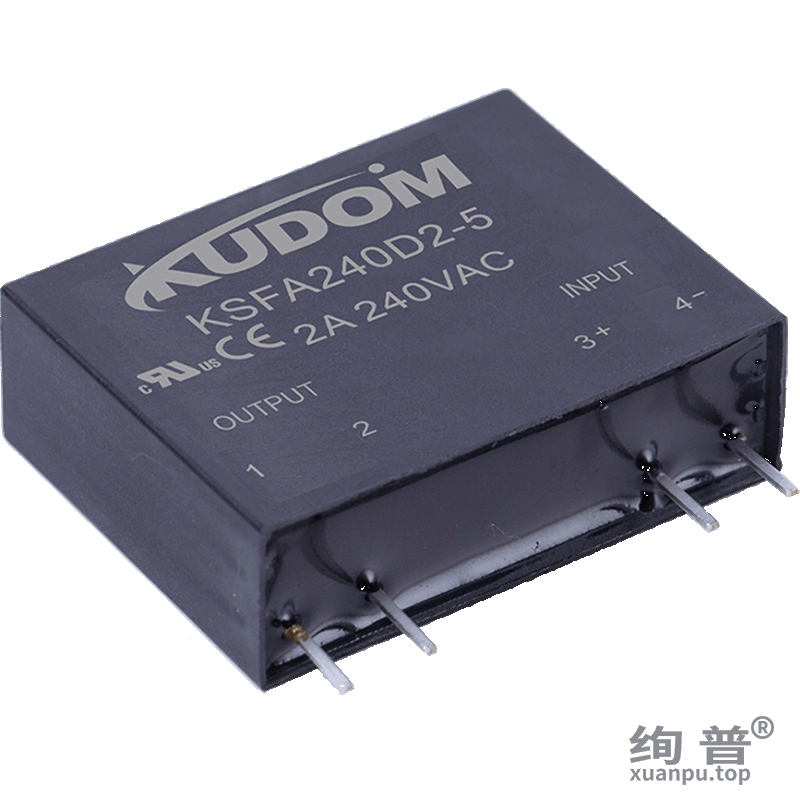Welcome to Shanghai Xuanpu Electronic Technology Co., Ltd!
- Site Map
- Contact Us
- Follow WeChat

-
 简体中文
简体中文
Welcome to Shanghai Xuanpu Electronic Technology Co., Ltd!

 简体中文
简体中文
Hotline
+86-21-34291916Choosing the appropriate solid-state relay model for oneself requires comprehensive consideration of multiple factors, and the following are some key considerations:

1. Load type: Determine whether the load is resistive, capacitive, inductive, etc. Different types of loads may have different requirements for solid-state relays. For example, in inductive load scenarios, it is advisable to choose enhanced solid-state relays with high commutation dv/dt.
2. Load current: Select a solid-state relay that can withstand the actual load current and leave a certain margin. When the ambient temperature rises, the load capacity of solid-state relays will decrease, so the influence of ambient temperature should be considered.
3. Load voltage: Ensure that the output voltage of the solid-state relay can meet the working voltage requirements of the load. For non steady state or non resistive loads such as single-phase or three-phase motor loads that frequently start, the maximum composite voltage generated when the working state or conditions change should be considered. The rated output voltage and blocking (breakdown) voltage of the selected relay should be sufficiently high.
4. Control voltage: Clearly define the control voltage range provided by the control circuit and select the matching solid-state relay model.
5. Switching speed: If the device has requirements for switching speed, a solid-state relay with appropriate switching speed should be selected.
6. Working temperature range: Select solid-state relays that can operate normally at this temperature range based on the actual working environment.
7. Response time: For applications that require high precision and fast response, choose solid-state relays with shorter response times.
8. Installation method: Consider the actual installation environment and choose a suitable installation method, such as PCB installation, panel installation, or DIN rail installation.
9. Insulation resistance: Select solid-state relays with sufficiently high insulation resistance according to the electrical requirements of the equipment or system.
10. Brand and Quality: Well known brands usually have more assurance in terms of quality and reliability.
11. International certification: Depending on specific requirements, consider whether solid-state relays have relevant international certifications such as UL, CSA, VDE, etc.
12. Surge characteristics: Calculate and analyze the surge characteristics of the controlled load, select solid-state relays that can work stably and withstand surge currents. For loads with high surge currents, such as electric heaters, contactors, etc., solid-state relays need to be de rated for use; For incandescent lamp loads, appropriate protective circuits should also be added. For transformer loads, the rated current of the selected product must be higher than twice the working current of the load; For induction motor loads, the rated current value of the selected solid-state relay should be 2-4 times the operating current of the motor, and the surge current value should be 10 times the rated current.
13. Appearance and heat dissipation: Consider the external dimensions and heat dissipation of the solid-state relay to ensure that it can be installed in the designated space and effectively dissipate heat during operation. If necessary, appropriate specifications of heat dissipation plates can be installed.
Before choosing a solid state relay model, it is recommended to carefully analyze the specific requirements and working conditions of the equipment or system. If necessary, you can also consult professionals or suppliers to ensure that the most suitable solid state relay is selected. At the same time, attention should also be paid to the precautions for using solid-state relays, such as controlling the polarity of the signal and avoiding short circuits at the output terminal.
Copyright © 2023-2025 Shanghai Xuanpu Electronic Technology Co., Ltd. All rights reserved 备案号:沪ICP备19025686号-1